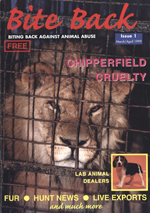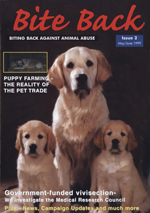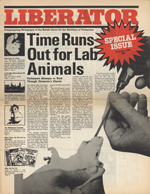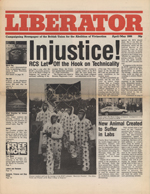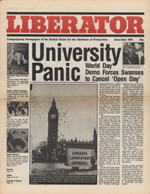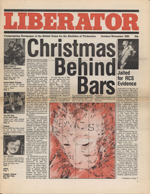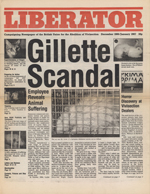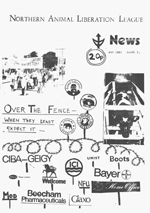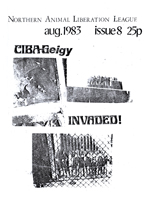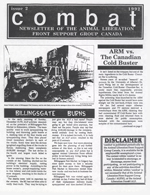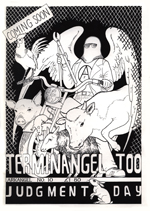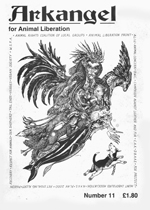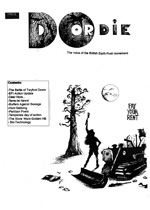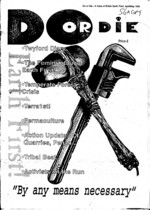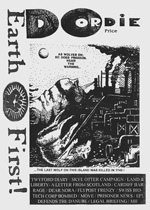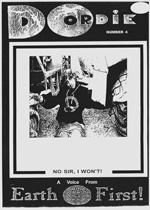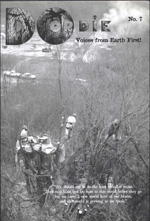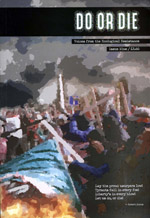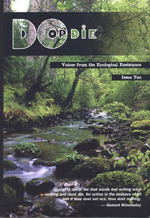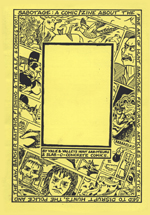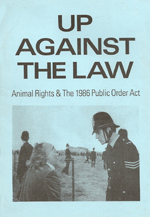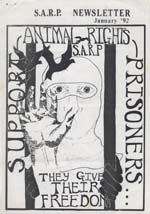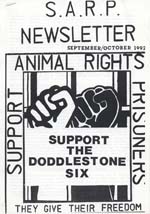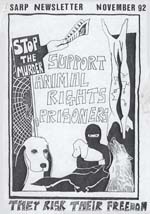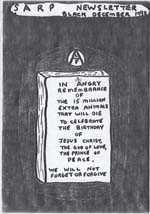The Archives
-
Books
The Hunt and the Anti-Hunt
05.31.15 | PermalinkThe Hunt and the Anti-Hunt (1982, London, England)
“It is not difficult to understand why animals are treated so indifferently in a society where the powerful minority holds the majority in similar contempt.” Philip Windeatt
Grounded firmly in a traditional British left-socialist critique, The Hunt and the Anti-Hunt is Philip Windeatt’s classic treatise on opposition to bloodsports. Written shortly after the author worked as a researcher on The Animals Film, each page drips with anger at both the act of sport hunting and the economic class that perpetuates it.
Anyone seeking a better understanding of the history of the animal liberation movement would do well to read this short book. Tracing bloodsports back to the domestication of canines for hunting purposes, the book continues by describing the founding of early animal welfare societies and the eventual emergence of the Hunt Saboteurs Association and Animal Liberation Front. Along the way expect a refreshing analysis of the pillaging of public lands, human alienation from wilderness, corporate governance, and many other subjects that were too often missing from the animal lib literature of the 1980s.
…
-
Periodicals
Bite Back (U.K.) #1&2
04.07.15 | PermalinkBite Back – Issues 1-2 (1999, Bristol, England)
One of at least four publications to share the same moniker, this version of Bite Back came into being at the turn of the century. Glossy, full magazine sized, and free, Bite Back was a wonderful tool for reporting on the exciting campaigns of its era. Anyone interested in pressure campaigning will enjoy the brief articles, updates, and images from Hillgrove, Shamrock, Regal Rabbits, and Huntingdon Death Sciences.
We have very little information about this publication and do not know if there were subsequent issues. If you have more information please contact us HERE.
…
-
BUAV Liberator, Most Popular
BUAV Liberator 1986
10.15.14 | PermalinkBUAV Liberator (1986. London, England)
“Although the BUAV as a limited company can only organize legal activity, we aim to complement and support direct action whenever possible.” BUAV editorial, April-May 1986
Frequent readers of the site will be aware that TALON’s volunteers are big fans of the BUAV Liberator. Not only do its old pulp pages bleed with animal lib history, but the politics represented by BUAV at that time were among the most progressive (and occasionally radical) of any major national non-profit working for non-humans.
During this era the British Union to Abolish Vivisection supported any direct action which did not include pre-meditated violence towards a human, and proudly advocated a broad array of strategies and tactics. From letter writing to sabotage, legislation to arson, the BUAV gave coverage to nearly all of the activism in England at the time- and that is only a small part of what makes these papers so great.
Year after year, each volume of the Liberator gives us clues as to the mood within the movement. In 1986 for example, we see a somber tone set over the movement as the Liberation League’s began to fold, the government passed legislation expanding vivisection, and dozens of activists began prison sentences over lab raids. This blow to activist morale in 1986 was perhaps most visible in the actions of Robert Blackman, a young man who entered the Colchester cattle market and self immolated to protest the sell of living beings. His mother later said that “He gave his life because he thought the cruelty would never stop.”
Interestingly, 1986 was also a year filled with inspiring actions for animals. Issue after issue details labs shut down, vivisectors ending their careers, a dramatic rise in veganism and vegetarianism among the general public, and non-humans having their first taste of freedom. It is only within the context of the meteoric rise of animal rights in the earlier part of the 1980s could this year be seen as any kind of a failure. Indeed, if the level of activism in these issues were to occur today morale would sky rocket and great breakthroughs could be made- and all of us should take that as a challenge!
…
-
Periodicals
N.A.L.L. Newsletter #7-8
10.10.14 | PermalinkN.A.L.L. Newsletters – Issues 7-8 (1983, Manchester, England)
In the history of our movement there is no group that inspires me more than the Northern Animal Liberation League. They had broad politics, bold tactics, a unique take on direct action, and an appreciation for solidarity with other revolutionary groups that was ahead of their time.
Their newsletter, unfortunately, wasn’t on par quality wise with the rest of their organization. Constrained by time and money, this photocopied mail out is unattractive and devoid of the analysis that made NALL so great. That isn’t to say that it isn’t an absolute joy for fans of animal liberation history though! While I would love to see more of NALL’s radical socialist and anti-authoritarian roots in these pages, I can not deny the simple pleasures of reading about daylight raids, hunt sabotage, and the wholesale ruining of vivisectors lives in England’s north. Even NALL’s hokey and ill-informed embrace of pseudo-science bunk like homeopathy has a certain charm and helps to flesh out the group’s character for those of us who missed the glory days.
TALON is always on the lookout for anything related to the Animal Liberation Leagues. If you have other newsletters, copies of TARGET, leaflets, or anything put out by the Leagues please contact us HERE.
…
-
Periodicals
Combat #2
08.28.14 | PermalinkCombat #2 (1992, Edmonton, Alberta, Canada)
A full three years and one month after the posting of Combat #1, we have finally found a copy of the second issue. Rumored to have been almost completely confiscated by RCMP officers the day it came back from the printers, Combat #2 is one of the rarest publications on our site. Our thanks go out to everyone who helped us track it down.
While this issue is far less ambitious than the first issue of Combat, its real problems are the actions that it is covering. Both cover stories were public relations disasters for the animal liberation underground at a time when direct action was already in decline, and one was a disaster for the non-humans it sought to save.
The Cold Buster contamination hoax, like all contamination hoaxes before and after, was mostly successful in convincing the world that animal liberationists were willing to target the public and risk killing random consumers. These hoaxes do generally cause large amounts of financial damage- but none of them has ever stopped a product from being animal tested and it is difficult to believe that the benefits outweigh the costs. When the Animal Rights Militia announced a week after the initial scare that the contamination was a hoax, the media barely paid attention.
The Billingsgate Fish Market action was even more tragic. The action itself involved economic sabotage and arson, both defensible acts against the capture, confinement, and killing of non-humans, except that in this instance fire was set to trucks which were parked directly against the building itself. The flames caused a short circuit to the building’s electrical systems, halting pumps to crab and lobster tanks inside. More than a dozen were killed. While it is true that those animals were already slated for death, it is still unconscionable that their lives were cut short by animal liberators.
This isn’t to say that there is nothing redeeming about this second and final issue of Combat. One of the original messages from the Western Wildlife Unit is presented here unedited, and there are also rare accounts of some of the last major hunt sabotage actions in the United States.
We are happy to have saved this publication from obscurity and to make it available once again here on TALON.
…
-
Arkangel, Periodicals
Arkangel #10-11
07.03.14 | PermalinkArkangel #10-11 (1993-1994. London, England.)
The early 1990s were a tumultuous time for the movement in England. Hunters began hiring professional security services to beat and harass saboteurs, the violence became so extreme that when Tom Worby was murdered by a hunt masters vehicle, the hunters nearby laughed and mocked his death. The hopefulness of the 1980s was fading away, and campaigners were becoming more hardened, which in turn led to a decline in public support as groups like the Justice Department began sending out small mail bombs. Many organizations were mired in infighting over strategy and issues of class and race. And then there was the problem of repression. Scotland Yard’s Animal Rights National Index had gathered detailed profiles on over 21,000 animal liberationists by 1990, and their spying on the movement was only set to intensify.
Through it all a dedicated core of individuals forged ahead and took animals from places of abuse, educated others about the plight of non-humans, and spread the message of compassionate action across oceans and artificial borders. Arkangel tells the story, and we are happy to continue our posting of the complete set here on TALON.
…
-
Do or Die, Most Popular, Periodicals
Do or Die – The Complete Set!
04.09.14 | PermalinkDo Or Die #1-10 (1993-2003, Brighton, England.)
A few years ago a friend asked me if I had a complete set of Do or Die, the British Earth First! publication that inspired and incited eco-warriors throughout the 1990s and early 2000s. At one time I did have them, but they had long since been stolen by a Joint Terrorism Task Force.
After a brief discussion, we decided that Do or Die was too important to fade into obscurity. We began tracking down each issue, and decided that while we were at it we ought to archive some other publications as well. That effort is how this web site began, and now, thanks to 56a infoshop of South London and Tim @ NEDS Northampton, we can finally share the very rare issue #2. This completes our collection, and our original mission as well.
When read as a set, Do or Die is a chronicle of people from across the globe counter-striking capitalism, ecocide, and the state. Each issue is better than the last, but more importantly, each page is a spark licking at the fuse of the bomb that is your heart. Once lit, you’ll know that these pages are not mere history, but a reminder that we can explode onto the world stage like the fighters before us have. Do or die, now is the time to rise.
…
-
One-off publications
Sabotage : A Comic / Zine About The Fine Art Of Hunt Sabotage
02.15.14 | PermalinkSabotage : A Comic / Zine About The Fine Art Of Hunt Sabotage (1992 – Cardiff, UK)
Produced by the Vale and Valleys Hunt Sabs, this short zine provides exactly what the title suggests. The interior has articles and comics from a wide cross section of saboteur subcultures, from crusties to older folks in white tennis shoes. The quality of the content is all over the map as well, but still makes for an interesting look at sabbing culture and technique in the early 1990s.
…
-
One-off publications
Up Against The Law
09.16.13 | PermalinkUp Against The Law (1987 – London, England)
Long before the Animal Enterprise Terrorism Act or the advent of Ag-Gag laws, western governments were using other means to protect the profits of animal abusers. Through methods legislative and extra-legal, the British government was particularly skilled in disrupting the efforts of animal liberationists. By the late 1980s these attacks had become so commonplace and effective that J.J. Roberts (the collective pen name of John Page and Jane Holgate) of ARC Print (Publisher of the excellent Against All Odds) wrote Up Against the Law as an effort to give activists knowledge of repressive legislation and a means to fight back.
Up Against the Law is crucial reading for those who want to understand the history of public order laws, their use against activists, and how our movement has coped with past attacks on our abilities to protest.
…
-
Campaign newsletters, Periodicals
Support Animal Rights Prisoners Newsletters: Year Two
07.30.13 | PermalinkS.A.R.P. Newsletter #6-11 (1992 – Northampton, England)
One of the big frustrations of working on the TALON site is that the materials we archive contain so much information it becomes difficult to organize and contextualize it all. Our posting of the Barry Horne SARP newsletter revival has made this sense of frustration more distinct than ever.
1992 was an eventful year for the movement: Mike Hill was murdered by hunter Alan Summersgill, the Doddlestone six were arrested protesting that murder, in North America Darren Thurston was arrested, Ronnie Lee was released, Kieth Mann was on remand and just about to escape from prison… This is just the tip of the iceberg as far as the significant events that took place over twelve long months twenty one years passed. We could spend pages discussing how these incidents shaped the future, how recent revelations about police informants in the UK have changed our understanding of old arrests, and so on. Unfortunately there is no time to pull at all of these strings- but the SARP newsletters certainly will provide inquisitive readers with many threads of their own to pull. From details of Operation Fox to “Laugh Along with the ALF,” each newsletter if filled with intriguing bits of our collective history.
…

